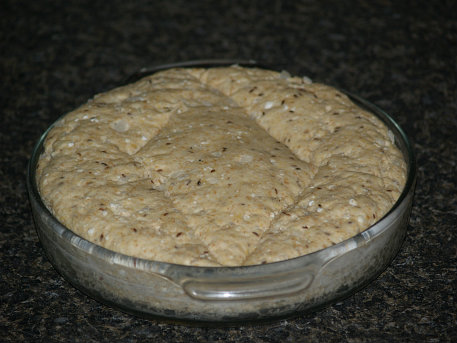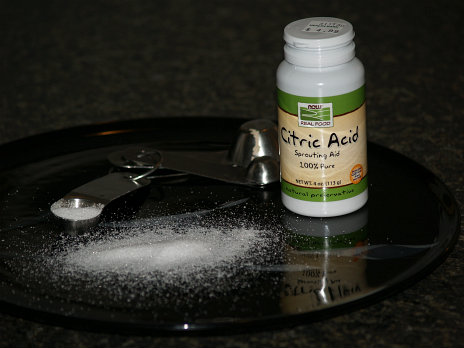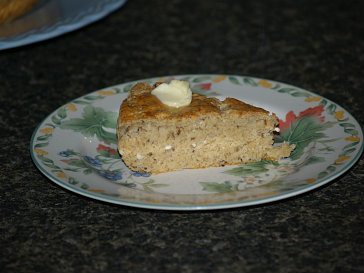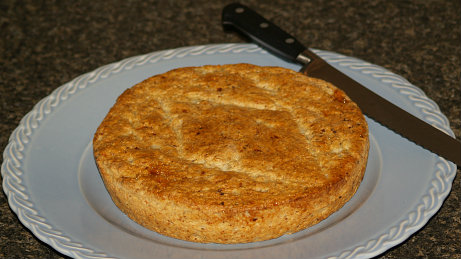- Painless Cooking
- Spices
- Citric Acid
What is Citric Acid?
What is Citric Acid? Citric acid, also known as sour salt, is a natural preservative and flavor enhancer, It adds an acidic sour taste to recipes but in many cases in very small quantity, it makes a very good substitution for lemon juice. This product dates back to the eighteenth century when it was crystallized from lemon juice. In the early nineteen hundreds, industrialized methods were begun to make citric acid. Today over 1,600,000 tons are produced in the world annually of which about seventy percent is use in the food industry.
What is Citric Acid and its Nutritional Value; Citric acid has no nutritional value, however it is a common food additive for flavor and as a preservative. Many people confuse citric acid with ascorbic acid which provides Vitamin C but you cannot get Vitamin C from pure citric acid.
Various degrees of citrus acid (or sour salt) is found in citrus fruits like oranges, grapefruit, lemons and limes; lemon and lemon juice containing the most concentration of citric acid. Other things are found in lemon juice like water, sugar, vitamins and minerals; one vitamin is Vitamin C which helps with iron absorption. Because of the sugar in lemon juice, it will contain calories which citric acid does not. Why use citric acid? It is a condensed powder form so it takes very little providing good results in recipes that you wouldn’t want a lot of liquid or cause a very sour taste.
What is Citric Acid and it’s Uses? Citric acid can be used to replace lemon juice in many recipes; especially in canning, beverages like soft drinks, cheese making and homemade ice cream. In ice cream and cheese making it is used as an emulsifier to keep the fats from separating. In canning it will help keep the foods firm, more colorful (More than lemon juice) and prevent bacteria from growing by regulating the PH level.
Aside from food products, what is citric acid used to make detergents, soaps and household cleaners. It helps to break down the grease. A concentrated solution of citric acid will remove hard water stains from glass cooking items. It is also used in the production of cosmetics and pharmaceutics like products for ingestion and personal care items.
What is citric acid (or sour salt) and can replace lemon juice in many recipes? When a recipe calls for a teaspoon of lemon juice or up to two tablespoons, I might replace it with citric acid. If it is for more lemon juice where you need the liquid, I use the lemon juice. Use 1/2 teaspoon citric acid to 2 tablespoons lemon juice or a 1 to 12 ratio.
Some ways of using citric acid when cooking are to add ½ teaspoon in each quart jar when canning fruits and vegetables, blend 1 teaspoonful with fresh cut and peeled fruit before canning, in some recipes (like sour dough breads or dill breads) replace salt with it or sprinkle on your foods for flavoring to reduce sodium intake . By adding a pinch of citric acid to cream sauces it will help to prevent the breakdown of the fats.
NOTE: The only place I am able to buy citric acid locally is at the health food store.
FRESH STRAWBERRY PRESERVES
- 1 Cup water
- 1 Envelope unflavored gelatin
- 2 Cups coarsely chopped strawberries (about 1 quart whole)
- 1 Pinch citric acid
- 1 Cup honey
Pour water into saucepan and sprinkle gelatin over it; let stand 5 minutes.
Add berries, honey and citric acid to gelatin mixture; heat just to boiling while stirring.
Pour into hot sterilized jars and refrigerate.
If you are planning to freeze leave 1 inch headspace.
Allow to cool 10 hours in refrigerator before freezing.
WHAT IS CITRIC ACID IN DILL ONION BREAD
- 1 Package dry yeast
- ½ Cup warm water (about 110F degrees)
- 1 Beaten egg
- 1 Cup cottage cheese (heated to 110 F degrees)
- 1/3 Cup very finely chopped onion
- 1 Tablespoon melted butter
- 2 Cups flour
- ½ Cup wheat germ
- 1/3 Cup whole bran cereal
- 1 Tablespoon sugar
- 1 Tablespoon dill seed
- ½ Teaspoon citric acid
- ¼ Teaspoon baking soda
Soften yeast in warm water.
In bowl combine egg, cottage cheese, onion and butter; mix well.
Stir together in another bowl flour, wheat germ, bran cereal, sugar, dill seed, citric acid and baking soda.
Add yeast mixture and cottage cheese mixture to the flour mixture; stir well.
Cover and let rise in a warm place until doubled about 1 hour; stir down dough.
Knead dough on a lightly floured surface abou8t 1 minute.
Grease hands and pat into a well greased 9 inch X 1 ½ inch baking dish or pan.
Cover and let rise until doubled about 1 hour.
Preheat oven to 350F degrees.
 Ready to Bake Onion Dill Bread
Ready to Bake Onion Dill BreadGently score top of bread in a diamond pattern.
Bake for 40 minutes or until golden brown; remove from pan and cool on wire rack.
BANANA MILK SHAKE
- 2 Cups milk
- 2 Sliced bananas
- ¼ Cup heavy cream
- 2 Tablespoons sugar
- ¼ Teaspoon citric acid
- 1 Egg yolk
- Ice cubes
Place milk, bananas, cream, sugar, citric acid and egg yolk in blender.
Blend mixture until smooth; pour into glasses over ice cubes.
CANNED CORN
- 1 Quart sweet corn cut from cobs
- 1 Teaspoon salt
- ½ Teaspoon citric acid
- 1 Teaspoon sugar
- Boiling water
Fill each clean quart jar with corn, salt, citric acid and sugar.
Fill jar with boiling water leaving 1 inch head space.
Pressure process at 10 pounds of pressure for 20 minutes.
BLACKBERRY ICE CREAM RECIPE
What is citric acid? It is used in this recipe to prevent the fat from separating making a creamy smooth ice cream.
- 5 Cups fresh blackberries washed and well drained
- 1 Cup honey
- 2 Envelopes unflavored gelatin
- 1/3 Cup cold water
- ½ Teaspoon citric acid
- 2 Cups heavy cream
- 2 Egg whites
Set aside 2 cups blackberries; drizzle honey over remaining 3 cups of berries.
In a small saucepan sprinkle gelatin over water’ set aside 5 minutes to soften.
Heat mixture slowly while stirring to dissolve gelatin.
Puree honeyed blackberries in blender; press through strainer to remove seeds.
Add dissolved gelatin to pureed berries; add reserved 2 cups of berries, citric acid and cream.
Process in ice cream maker until soft.
Beat egg whites with electric mixer until stiff.
Add whites to soft ice cream and process in ice cream maker until firm.







